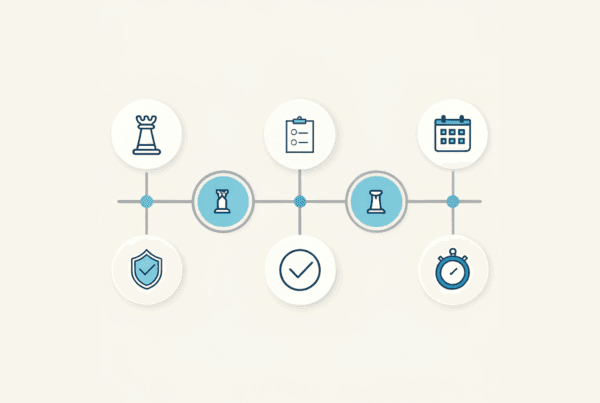Selling your Occupational & Hand Therapy practice is one of the most significant financial and personal decisions you will ever make. For practice owners in Minneapolis, the current market presents a unique set of opportunities and challenges. Navigating this landscape requires a smart strategy built on a clear understanding of your practice’s value, local market dynamics, and the buyer’s perspective. This guide provides the insights you need to begin that journey.
Understanding your practice’s current market position is the first step toward a successful transition.
Minneapolis Market Overview: A Strong Foundation
The Minneapolis-St. Paul area is a robust market for healthcare services, and occupational and hand therapy is no exception. If you are an owner here, you are in a favorable position. The market is not just stable; it is poised for growth, supported by strong underlying fundamentals.
A Growing Local Demand
Employment statistics for Occupational Therapists and Assistants in the Twin Cities metro show positive trends and healthy growth projections. This demographic tailwind signals a sustained need for your services, a key factor that sophisticated buyers look for. A strong local labor pool and patient base make your practice an attractive and viable asset.
National Sector Strength
This local strength is amplified by national trends. The entire market for occupational and physical therapy services in the U.S. is projected to expand significantly in the coming years. This broad-based growth gives buyers confidence that they are investing in a durable and expanding sector of the healthcare economy, not a shrinking one.
Key Considerations for Minneapolis Sellers
While the market is strong, a successful sale depends on positioning your practice correctly. Buyers in a specialized market like Minneapolis look beyond the surface-level numbers. They are assessing the quality and defensibility of your business. This means paying close attention to your referral networks, particularly from orthopedic and primary care physicians, as these are difficult-to-replicate assets. Furthermore, demonstrating compliance with Minnesota’s specific licensing and regulatory requirements is not just a formality; it is a critical step to de-risk the transaction for a potential buyer and prevent issues during due diligence.
Understanding Market Activity and Buyers
While specific sale prices for Occupational and Hand Therapy practices in Minneapolis are not always public, we can look at related activity for clues. We have seen physical therapy practices in Minnesota list for sale in a wide range, from under $100,000 to over $600,000. This wide spectrum shows that value is highly dependent on the individual practice’s performance and structure. More important than a general price range is understanding who is buying and what they are looking for.
| Buyer Type | Primary Motivation | What They Look For |
|---|---|---|
| Local Competitors | Geographic expansion, market share | Patient list, experienced staff, turn-key location |
| Larger Healthcare Systems | Service line integration, referral capture | Strong physician relationships, specialized services |
| Private Equity Groups | Platform building, operational growth | Scalable model, strong profitability (EBITDA) |
Knowing your potential buyer is critical. We don’t just
list
your practice. We run a professional process to create competitive tension among a database of qualified buyers to find the right fit for your financial and legacy goals.
The Path to a Successful Sale
The process of selling your practice is a journey with distinct stages. It begins long before a letter of intent is ever signed. The first step for most owners is getting a realistic understanding of their practice’s worth through a comprehensive valuation. From there, the process involves confidentially marketing the opportunity, vetting potential buyers, navigating negotiations, and managing an intensive due diligence period where every aspect of your business is scrutinized. Each step presents its own complexities. Proper preparation and expert guidance are what separate a smooth, successful transaction from one that falls apart at the last minute, often due to preventable surprises.
How Your Practice is Valued
Many owners believe their practice’s value is a simple multiple of revenue. The reality is that sophisticated buyers value your practice based on its demonstrated cash flow. This is where the concept of Adjusted EBITDA (Earnings Before Interest, Taxes, Depreciation, and Amortization) becomes the most important number in your sale. It represents the true earning power of your business.
Here are the key factors that determine your valuation multiple:
- Practice Scale: Larger practices with higher EBITDA levels are seen as less risky and command higher multiples.
- Provider Dependence: A practice that relies less on the owner and more on associate therapists is significantly more valuable.
- Specialization: Niche services, like certified hand therapy, can increase your multiple as they create a competitive moat.
- Referral Sources: A diverse and consistent base of referrals is a major value driver.
- Growth Trajectory: Demonstrating a clear path to future growth will earn you a premium valuation.
Most owners are surprised to learn their practice is worth more than they think once their financials are properly normalized and their story is framed for buyers.
Planning for Life After the Sale
The moment the sale closes is not the end of the story. It is the beginning of your next chapter. What that chapter looks for depends entirely on planning that happens before the deal is done. For many owners, the structure of the sale is critical. This can involve an earnout, where you receive additional payments based on future performance, or an equity rollover, where you retain a minority stake in the new, larger entity. This “second bite at the apple” can often be more lucrative than the initial sale. Just as important is protecting your legacy and ensuring your staff is taken care of during the transition. These are not just afterthoughts; they are central components of a well-executed exit strategy.
Frequently Asked Questions
What is the current market outlook for selling an Occupational & Hand Therapy practice in Minneapolis, MN?
The Minneapolis-St. Paul area has a robust and growing market for occupational and hand therapy services, supported by strong employment trends and local demand. The national sector is also expanding, which positively influences buyer confidence.
What key factors do buyers in Minneapolis consider when purchasing an Occupational & Hand Therapy practice?
Buyers assess the quality and defensibility of the practice, focusing on referral networks from orthopedic and primary care physicians, compliance with Minnesota licensing and regulatory requirements, and the practice’s cash flow and growth potential.
How is the value of an Occupational & Hand Therapy practice typically determined?
The practice value is primarily based on adjusted EBITDA, which reflects true cash flow. Factors influencing the valuation multiple include practice scale, provider dependence, specialization (e.g., certified hand therapy), referral diversity, and growth trajectory.
What types of buyers are interested in Occupational & Hand Therapy practices in Minneapolis and what do they look for?
Buyers include local competitors seeking geographic expansion, larger healthcare systems aiming for service line integration, and private equity groups focused on operational growth. They look for attributes like strong patient lists, physician relationships, specialized services, and scalable models with profitability.
What should sellers consider for planning life after selling their Occupational & Hand Therapy practice?
Sellers should plan the sale structure carefully, considering options like earnouts or equity rollovers for additional future payments. Protecting their legacy and ensuring staff continuity during the ownership transition are also critical parts of a successful exit strategy.



